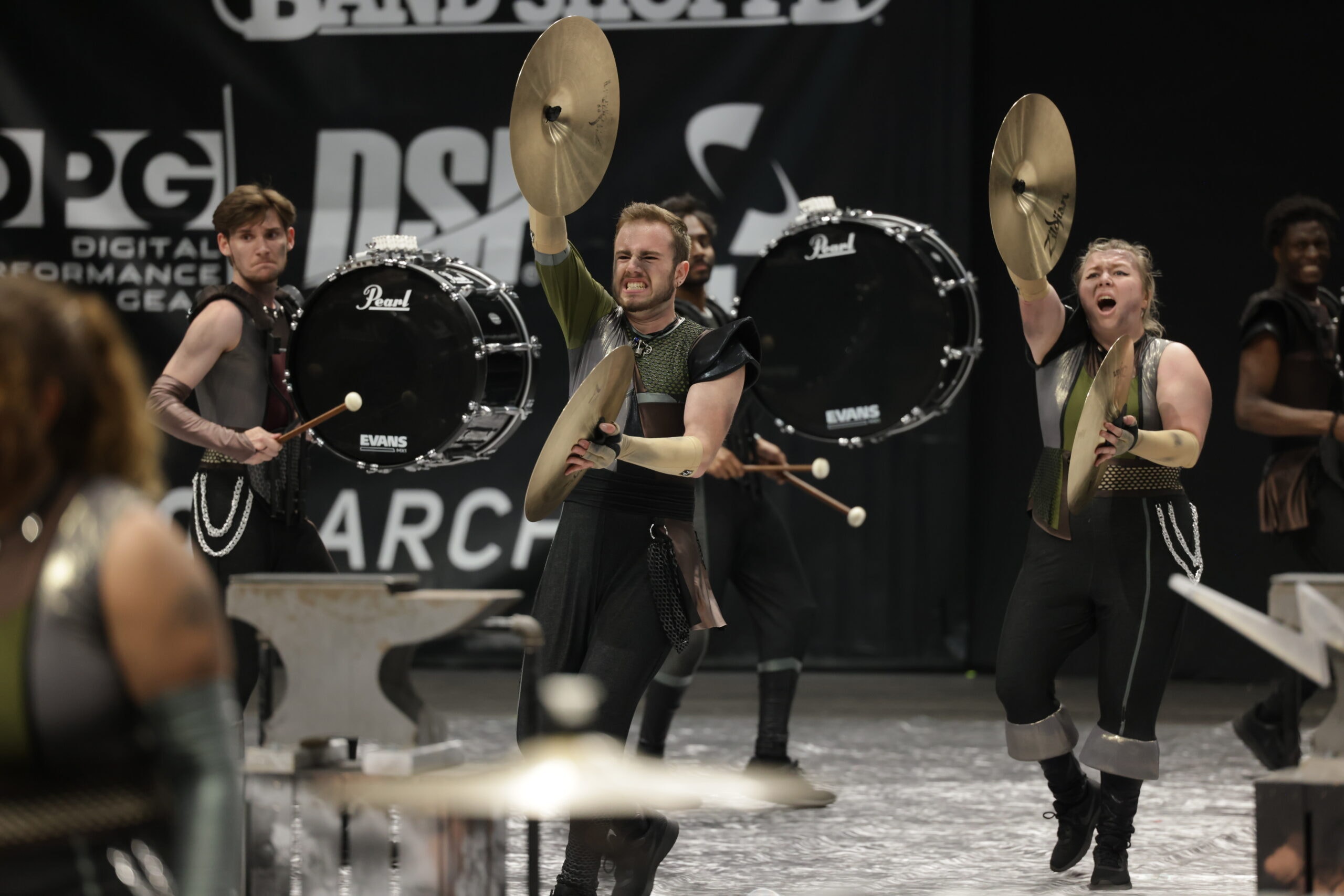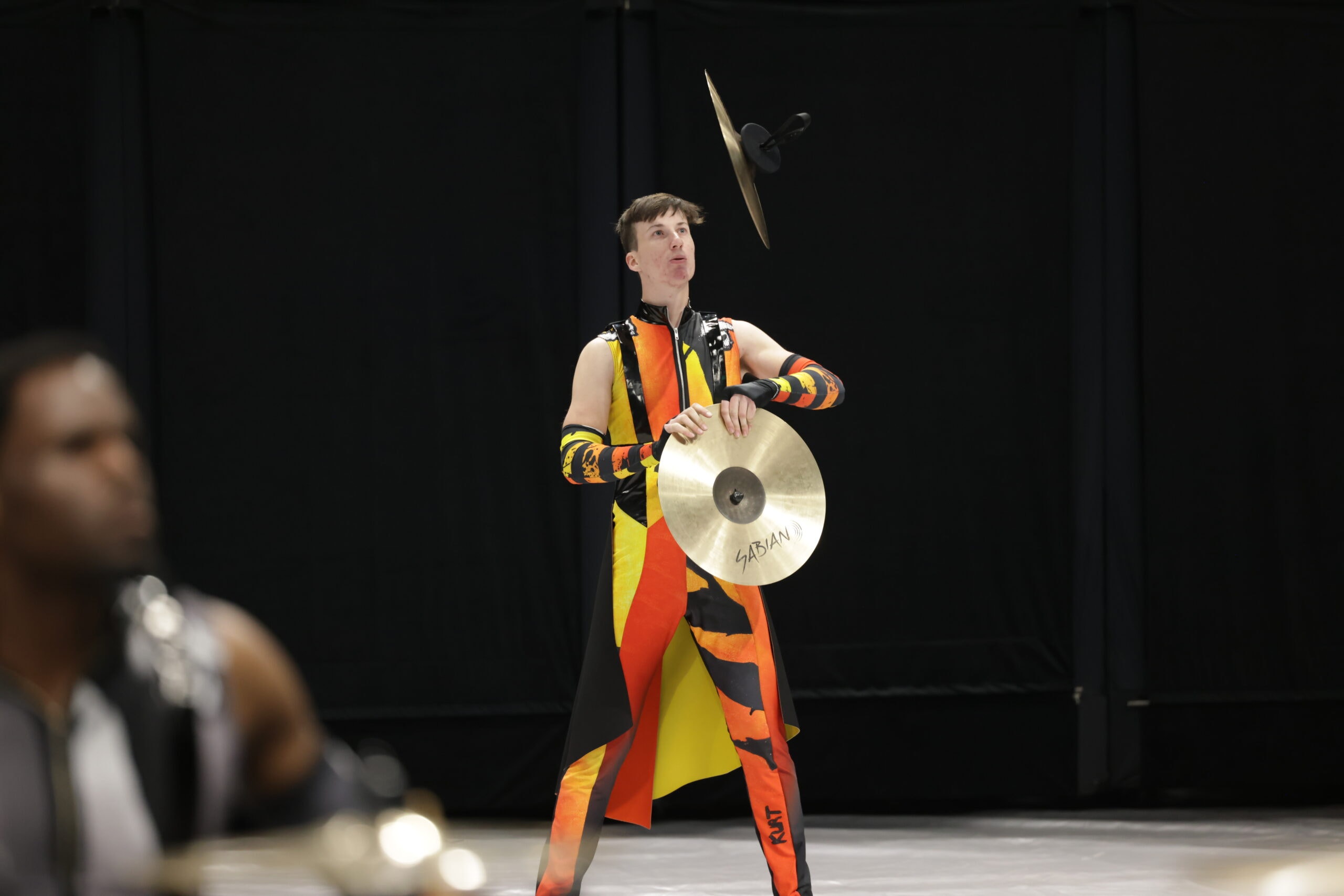By: Mikey McGuire
Cymbal lines have been a staple of many marching percussion units since the creation of the indoor percussion division of WGI. While the overall necessity and effect of cymbal lines forges great debate amongst members of the marching arts community, they have secured a solid position within WGI’s 2nd largest competitive division.
People wonder why they arguably fit better in an indoor setting than an outdoor one. Well, the answer is easy, visibility. The difference between Indoor and Outdoor cymbal lines is how easily they are seen and heard by the audience. When a 100-piece horn line covers them up, the finer details of their sound and visual movements do not read. In a more intimate setting such as indoor, however, the full range of the cymbal sounds is heard and can be used in many different ways.

Over the last decade, the cymbal line has grown from a simple musical addition into its own visual and musical entity. “In a way, you’re getting the best of both worlds concerning color guard and percussion.” Jaden delaConcepcion, a member of the Rhythm X cymbal line, said. “With the visual and the percussion aspects, you get both embellishments.”
At first glance, it may seem difficult to imagine a wide range of tambours coming from one cymbal performer, but cymbals are one of the most sonically diverse instruments in the ensemble. “Cymbals can make a wide variety of sounds, from the biting sound of a tap choke to the soft ring of a sizzle.” Abby Trach, a cymbal performer at Redline, said. “They can make unison sounds that are uniform and pleasing to the eye, or they can be split up into parts to play more complex and denser rhythms that are pleasing to the ear.”
Cymbal lines have also proved beneficial to show designers. Due to the nature of the instrument, it is much easier for cymbal performers to drop their plates and pick them back up than it is for other members of the battery. This freedom of movement has allowed designers to use their cymbal lines as featured performers and dancers.

Indoor percussion has always had a strong sense of community between members, but few sections exemplify that community like a cymbal line. “Aside from what cymbal players can offer from a show/music setting, cymbal lines are full of some of the hardest working individuals I have ever met.” Olive Ovall, a cymbal instructor at Infinity Indoor Percussion, said. “They are truly valuable members and individuals. I’m not sure if it’s the nature of the instrument being extremely physical/sometimes painful or the kind of discipline that’s needed to perfect the craft.”
Cymbals are also a very accessible section for people new to indoor percussion. That accessibility allows so many more people to experience WGI that may not know how to play the drums at a high level. “Trying to learn a drum after high school, but before you hit your age out, can be extremely difficult in an activity where many others may already have a head start.” Amber McCausland, tech at Redline, said. “In my opinion, cymbals are one of the easier instruments to pick up and learn.”
Unlike traditional marching percussion instruments, cymbals have evolved massively over the last ten years, growing from a music-focused instrument to a visual-focused one. This is partly due to the advent of cymbal sleeves, these extra layers of fabric that protect the performer’s arms and allow them to perform “offhand visuals” more smoothly. Offhand visuals are movements performed outside the traditional cymbal grip and are used to create complex visual sequences.

Offhand visuals have become more prominent in East Coast/Midwest groups, giving birth to the east/west divide in the cymbal community. Groups on the west coast retain a more traditional music-focus approach to playing, while groups on the east have adopted more flashy and technical visuals to fill out their shows.
The East Coast technique has spread through various educational series on YouTube like “Seavine Cymbal Education,” started by Rhythm X cymbal instructor Chelsea Levine, and “Plateline Resource,” made by Infinity Percussion cymbal Instructor Bryan Kendrick. These resources have grown the cymbal community substantially in the last five years and will continue to educate cymbal players for years to come.
While their presence in other parts of the activity is still up for debate, cymbals have found a home in WGI where they can truly be appreciated for what they are and what they can bring to the ensemble. Indoor percussion has allowed this instrument to flourish and grow far beyond what the community thought capable ten years ago. There’s no telling what the future of the cymbal line looks like in this incredible activity.
About the Author:
Mikey McGuire has marched 3 seasons of WGI percussion, First playing cymbals with Crystal Lake Thunder out of Crystal Lake, Illinois in 2018. He moved on to Pi Percussion out of Romeoville, Illinois in 2019 and 2020, also playing cymbals. Mikey also writes for Missedapexpodcast.com as well as his personal blog mikeymcguireF1.com.






























